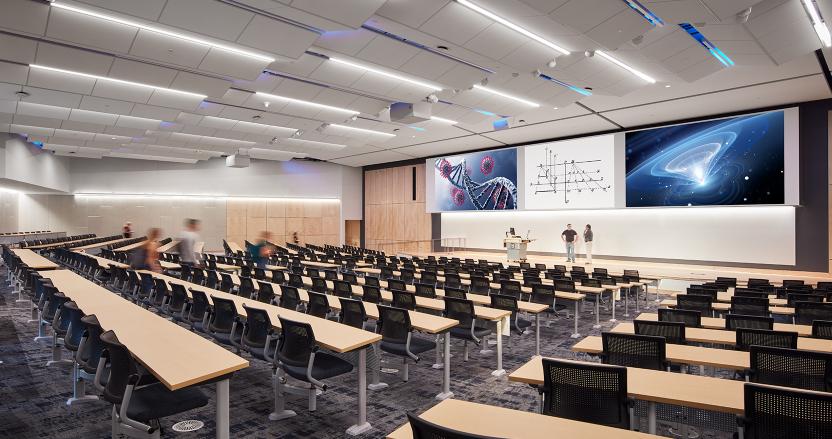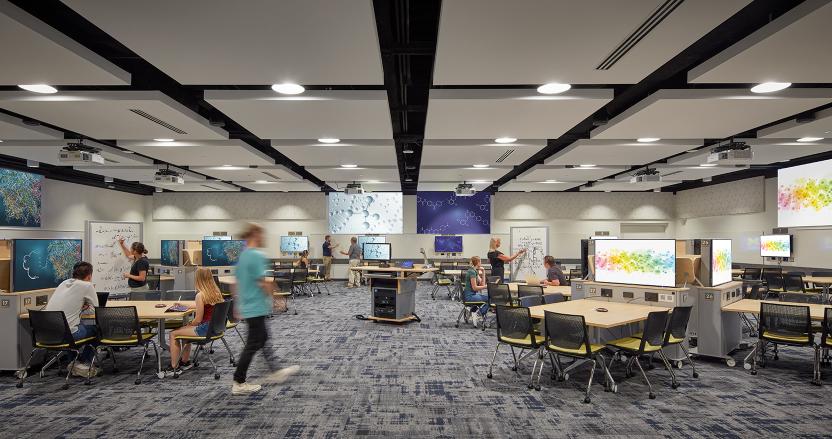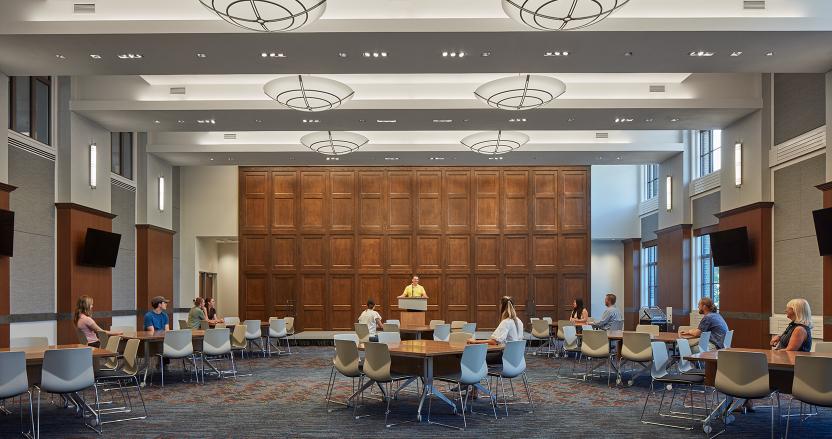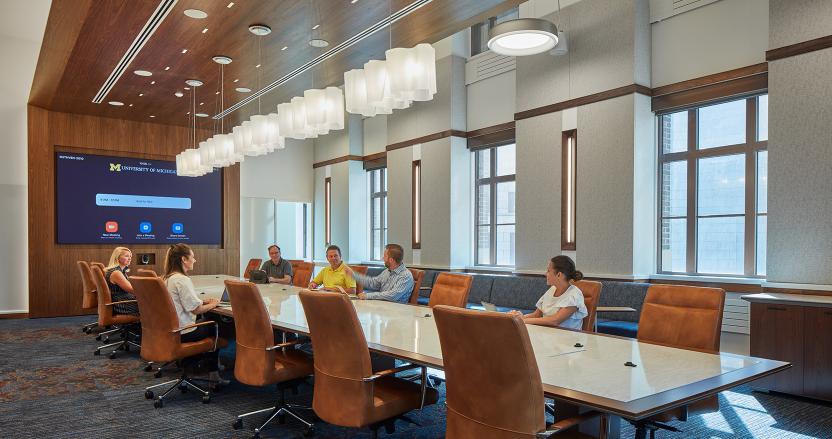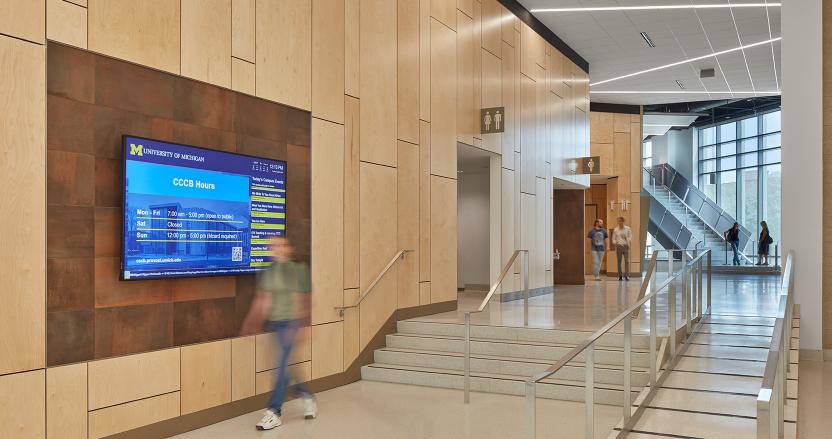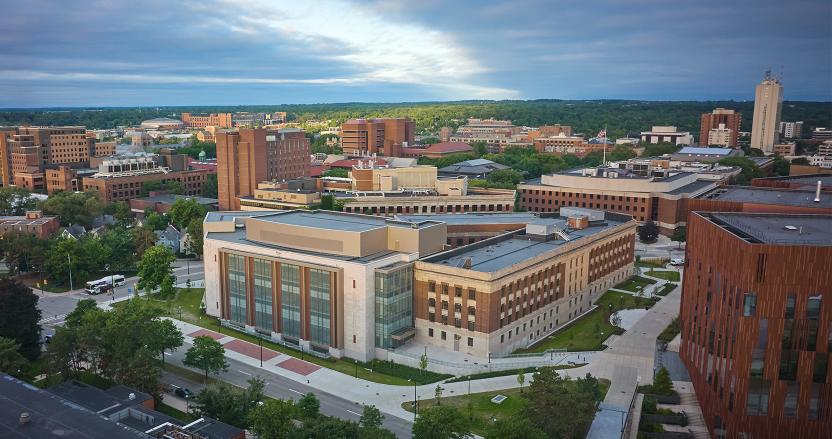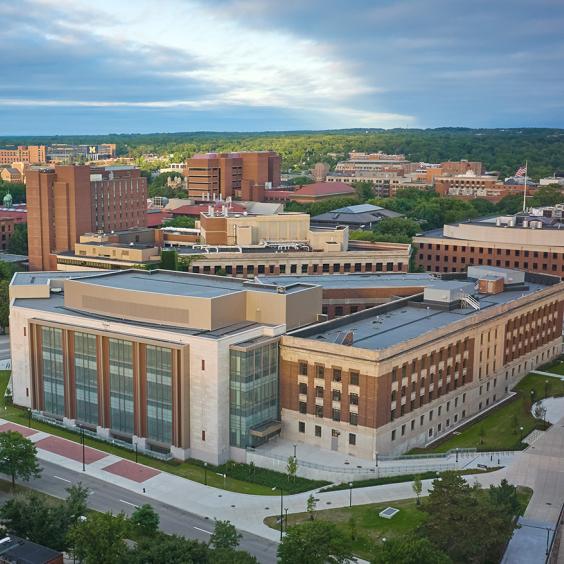In a collaboration between HED and SLAM, the new Central Campus Classroom Building (CCCB) and Alexander G. Ruthven Renovation project delivers the solution to a threefold problem on the University of Michigan’s central campus: 1) lack of large-format instructional space 2) a historic and beloved structure in need of reimagining and repurposing and 3) the university’s leadership and administration disconnected from the campus and student population.
The university was suffering from a lack of large format instructional spaces in central campus limiting their ability to support emerging pedagogy and active learning instructional styles. Conceived as a “learning loft”, the new 100,000 SF CCCB features right sized volumes and clear floor areas for new technology infused, flexible classrooms; innovative instructional and collaborative spaces to meet the evolving academic needs. These new active learning classrooms accommodate 1,400 student seats in a variety of learning configurations including a 550-seat auditorium, a 200-seat classroom in the round and other flexible, high-tech, team-based learning classrooms.
Composed of limestone, granite, and terra cotta, the classroom building design includes a cadence of columns and glazed openings that are powerful in scale, yet respectful and referential to the design of the adjacent historic Ruthven Building.
Located in the bustling central campus area, the Alexander G. Ruthven Building made the ideal new home for the university’s administration. The 135,000 SF renovation focused on retaining the spectacular historic rotunda and double height museum space, while creating functional office spaces, computational research space, and collaboration areas to encourage interdepartmental dialogue and collaboration. This open and inclusive environment better supports university leadership as they guide its operation to provide the best and most forward looking undergraduate, graduate, and professional education available today and thereby positioning the University for perpetual excellence.
The Central Campus Classroom Building and Alexander G. Ruthven Renovation project, LEED Gold certified, redefines the east edge of campus, creating a new gateway experience to the campus and providing a memorable learning experience for the nearly 10,000 students expected to utilize the facility each day.
The university was suffering from a lack of large format instructional spaces in central campus limiting their ability to support emerging pedagogy and active learning instructional styles. Conceived as a “learning loft”, the new 100,000 SF CCCB features right sized volumes and clear floor areas for new technology infused, flexible classrooms; innovative instructional and collaborative spaces to meet the evolving academic needs. These new active learning classrooms accommodate 1,400 student seats in a variety of learning configurations including a 550-seat auditorium, a 200-seat classroom in the round and other flexible, high-tech, team-based learning classrooms.
Composed of limestone, granite, and terra cotta, the classroom building design includes a cadence of columns and glazed openings that are powerful in scale, yet respectful and referential to the design of the adjacent historic Ruthven Building.
Located in the bustling central campus area, the Alexander G. Ruthven Building made the ideal new home for the university’s administration. The 135,000 SF renovation focused on retaining the spectacular historic rotunda and double height museum space, while creating functional office spaces, computational research space, and collaboration areas to encourage interdepartmental dialogue and collaboration. This open and inclusive environment better supports university leadership as they guide its operation to provide the best and most forward looking undergraduate, graduate, and professional education available today and thereby positioning the University for perpetual excellence.
The Central Campus Classroom Building and Alexander G. Ruthven Renovation project, LEED Gold certified, redefines the east edge of campus, creating a new gateway experience to the campus and providing a memorable learning experience for the nearly 10,000 students expected to utilize the facility each day.


